
Multidisciplinary magic
The Cleft Lip and Palate Unit Leaving a legacy
Dr Michael McGuinness Wellbeing series Nutrition for the busy dentist
E DITION 2 2024 THE RECOGNISED VOICE OF ORAL HEALTH IN WA adawa.com.au AUSTRALIAN DENTAL ASSOCIATION WA

Secure your future by investing in your own premises. You could borrow up to 100% of the purchase price of your practice premises and pay no establishment fee*
Wouldn’t it be great to create security for your practice and never have to worry about rent increases or relocation? All the while enjoying potential tax advantages and the flexibility to tailor your fit-out.
At BOQ Specialist, we offer the ability to borrow up to 100% of the purchase price of your practice premises. Plus, for a limited time we’re also waiving the establishment fee on eligible purchases.*
So if you’re thinking of taking ownership of your future, we’re here to make it easy, with over 30 years’ experience providing tailored finance solutions for dental professionals.
Visit boqspecialist.com.au/commercial or speak to your local finance specialist on 1300 160 160 today.
BOQ Specialist. The bank for dental professionals
*Subject to credit approval. Lending criteria, T&Cs and fees apply. Limited time no establishment fee offer is only available for new Business Term Loans (includes commercial property and goodwill loans) applications received between 1 March 2024 and 30 June 2024 (inclusive) and that fund by 31 August 2024. Only available for new borrowing between $200,000 and $3,000,000. Excludes internal refinances, increases to existing BOQ Specialist loans, loans for the purpose of property development, construction and land acquisition. Other fees and charges (including government charges) may be payable. This offer expires on 30 June 2024 and is subject to change without notice at the discretion of BOQ Specialist. It is not available in conjunction with any other offers, packages or promotions. This information is current as at 1 March 2024. Credit provided by BOQ Specialist – a division of Bank of Queensland Limited ABN 32 009 656 740 AFSL and Australian Credit Licence no. 244616 (“BOQ Specialist”).
Find a space to call your own



adawa.com.au 4 President's report Dr Gwen Chin 6 Leaving a legacy Dr Michael McGuinness 10 Multi-disciplinary magic The Cleft Lip and Palate unit 14 My wellbeing: part 2 Nutrition for the busy dentist 18 National Volunteer Week How you can help local dental volunteerism groups 20 With compassion and love Dr Rachael Wu's volunteerism story 24 CPD spotlight Meet Professor Ian Meyers 28 CPD calendar 35 Perio pockets 36 DPL feature Checking for zero 40 Good news stories 41 WADA Golf 42 Professional notices contents.

The President's report
Dr Gwen Chin ADAWA President
As we round out the first quarter of 2024, most of us are now in the swing of things again and 2024 seems to be the year for progress, both literally and metaphorically. Planned refurbishment of ADA house is on track, which will address, among other things, building fire safety and refresh to the main entry foyer.
Councillors have commenced their work with their respective committees, with meetings in full swing and plans for the year being mapped out. Our ADA Committees are the workhorses of our organisation, whose responsibilities range from organising and developing our renowned CPD program to establishing relationships with our newest members and students. To enable our Council to align with and support the strategic direction for ADAWA, we enlisted the AICD to provide governance training, who held a governance workshop in late March.
Following the recent ADA Inc governance reforms, ADA Inc is intended to be established as a public company limited by guarantee with a new board that is legally concerned only with the affairs of the company. It is timely therefore, for State associations to clarify and formalise relationships with the new ADA Ltd. In the meantime, the ADAWA Council will continue to work collaboratively with new ADA Ltd. In this spirit of collaboration, Council has agreed to participate in the newly formed ADA Advisory Committee (ADAAC).
The Terms of Reference for ADAAC note that it is established as a “key advisory committee of the ADA board”. While this appears to be a sensible approach to informing the board in its policy and advocacy, it remains to be seen as to what influence State associations will have especially as the new ADA board should only be concerned with matters affecting the performance and operation of ADA Ltd.
4 EDITION 2 ∙ 2024 western articulator
DISCLAIMER The views and opinions expressed in this publication and its attachments by advertisers and contributors are not necessarily endorsed by The Australian Dental Association (WA Branch) Inc. The Branch, its members, employees and agents do not assume any loss or damage which may result from any inaccuracy or omission in this publication, or from the use of the information contained, and make no warranties, express or implied, with respect to any of the material contained herein. Editorial Brooke Evans-Butler Designer Michelle Walker CEO Trevor Lovelle President Dr Gwen Chin All editorial or advertising enquiries E media@adawa.com.au A PO Box 34 West Perth WA 6872
my association. my adawa.
Did you know?
ADAWA members are entitled to a suite of services and benefits?
One of which is the highly-valued service provided by Dental Protection Limited (DPL) who act in YOUR interests only.
This provides you with access to a broad range of business and professional services, including:
• Advice and collegiate support, including 24/7 out of hours access to a dental advisor for emergencies.
• Comprehensive risk management advice in relation to reported claims, investigations and complaints.
• Private Health Insurance, Medicare (CDBS), Veteran Affairs audits and investigations.
• Advice and assistance with member responses to Aphra investigations, appropriate protective education, compliance with Dental Board conditions if imposed.
adawa.com.au
Leaving a legacy
Following his retirement late last year, we spoke to Dr Michael McGuinness about his remarkable career.

You only need to take a quick flick through Dr Michael McGuinness’ Curriculum Vitae to realise that his has been a remarkable career, however dentistry was not originally on his radar as a teenager in England.
“I wasn’t very good at school and at the age of 15, my father said: ‘You are going to leave school and get a job. I have got you a job as a lumberjack in Sweden’. It was his idea to make a man out of me and show me what the world was all about.
“Luckily, I was quite a big 15-year-old. Most of the lumberjacks that worked for the company at the time were mercenaries from South Africa. They were the toughest men you have ever met. I did six months as a lumberjack, which was the hardest work you will ever do.
Upon Michael's return to England, Michael's father had talked to a friend who was a dental technician working in Wimpole Street in London, who was in need of an apprentice.
“I started my time as a dental technician and I met a very famous guy named Paul McCartney,” Michael recalls. “His girlfriend Jane Asher lived in the building where I worked. I had wanted to become a professional cyclist, so I was riding to work every day as part of the training, and he caught me a couple of times in the downstairs lift area with my bike and we became friends. I honestly didn’t know who he was.”
It was studying to be a dental technician that ignited an interest in education in Michael. “As soon as I finished my City and Guilds, I enrolled in further education teacher’s certificate.” After passing the certificate the first-time round, he noticed an advertisement for a teaching dental technician in Western Australia.
“My girlfriend at the time was a West Australian girl and she said it would be
fantastic if we both went back to Australia, and I had a teaching job. I ended up at the Dental School in Wellington St as an instructor technician.
“A significant moment in my life was when one of the teachers in that group said: ‘Couldn’t you do what the students are doing on one of those models?’. I said I thought I could, and he said I should resign and become an undergraduate, so that is what I did.
“I was accepted under Section 8, which was for ‘incredibly gifted people who haven’t had circumstance’. I went to night school for a year and did the matriculation and passed that, so I gained entry to university under Section 8 and the normal way and through my dental background. That was the beginning of my five-year under-graduate training.”
Practicing life
After graduation, Michael went into practice in St George’s Terrace and was there for 29 years.
“After 29 years I had enough and wanted to do something else,” Michael says. “We saw an advertisement in the paper for a beautiful house in Toodyay, which was built 1910 with 14 rooms. We bought that and land around it, so we have 350 acres of land.”
In 2005, Michael opened his practice in Toodyay and after that another practice in Goomalling. He closed the Goomalling practice three years ago, and recently sold the Toodyay practice, but for a long time he was the only dentist in the Toodyay area and built a great rapport with the locals. ‘On the whole, we had fantastic patients and the written letters and cards I have received since I retired is nearly 100. The new dentist at the practice says: ‘I don’t know if I will ever get to be like you; they love you’. I am shocked and humbled by the recognition.
adawa.com.au

Work with Vietnam veterans
Michael has a long history with the pro bono treatment of Vietnam vets, which began as an undergraduate when an oral surgeon asked if Michael could assist. “A lot of vets had a tendon put in their lip and it was a hole that was not expandable,” he recalls. “We had to work inside a hole around the size of a fifty-cent piece. For some reason, even though I have big hands, I had very good manual dexterity for work like this.
Michael has worked with the Vietnam vets for 46 years, and in recognition of this work, was awarded the prestigious Z Force Award. “They came unannounced to Toodyay and presented me with the award. It was a very humbling experience.”
As well as his work with injured vets, Michael also contributed to a scholarship through the local RSL. “The Sandakan scholarship sends children from our local high school on the Kokoda Trail – I paid for 10 years for 2 children a year to go.”
His commitment to the RSL was also demonstrated when he became the Chairman of the Bendigo Bank in Toodyay and behind-the-scenes, managed to help
secure them a quarter of a million dollars for the rebuild of the RSL headquarters.
OHCWA
Michael is well-known for being instrumental in the build of the Oral Health Centre of Western Australia.
“I was the Head of School and at that time the school was in a very fragile position,” he recalls. “Shortly after I took on the position, the Deputy Vice Chancellor called me down to the university for a chat and said: ‘You weren’t told when you were made Head of School, but we are closing down.’ I asked why and he said the facilitates are terrible. “I wanted young West Australians to have their own dental school. I was very lucky that Richard Court was a friend of mine. It was on the Friday I saw the Deputy Vice Chancellor and so after lunch I went to Richard Court’s rooms in Nedlands. We had a chat for a couple of hours, and I told him we needed $30 million – $15 million from the government and $15 million from the university for the new school. He came around to my house the next day on the Saturday morning. I was cutting some roses in the front garden when he pulled up and he said: ‘I have got something for you.’ I
8 EDITION 2 ∙ 2024 western articulator
asked what and he said: ‘$15 million bucks’. “I said: ‘I have something for you’ and handed him the roses for his wife,” Michael laughs. “I then rang the Deputy Vice Chancellor on the Monday morning and told him and there was complete silence. He then asked if I would be the Head of Project. So, as well as carrying a full-time practice, I was the Director of the Project and was working literally 10 days a week. We finished on time and on budget.”
Michael went around the world to seek inspiration for OHCWA. “I didn’t want it to look like a hospital,” he recalls. I wanted people to look at it and think: ‘Wow this is beautiful. The entrance is a copy of the Museum of Modern Art in New York. I was in New York with one of my great friends, Dr Andrew Brostek and our wives sometime after OHCWA was completed and I took him to the Museum of Modern Art and he stood there and went: ‘It’s OHCWA!’”
The building of OHCWA meant Western Australia had a state-of-the-art facility and resulted in local dental students being able to complete their degrees in Western Australia, who would otherwise have had to complete their studies in South Australia.
Yonagah Hill Immigration Detention Centre
In addition to his other commitments, Michael has been working at the Yonagah Hill Immigration Detention Centre for the last six and a half years.
“Six years ago, I received a phone call from a guy in Sydney asking if I had time to be a dentist at the detention centre. I said I could do one day a week. Now I have retired, I do two days a week. Before I started they never had a dentist there for very long –maybe six months.”
A new chapter
Michael’s contribution to dentistry has not gone unnoticed – Dr M F McGuinness AM was made a Member of the Order of Australia in 2016. He was honoured for
significant service to dentistry as a clinician, to oral health education, to professional groups and to the community of Toodyay. Michael says he did not set out to take on all his contributions, but the recognition has been humbling.
Michael has also held a position as the President of the Dental Board of WA and Vice President of the Australian Dental Council in Melbourne.
Following the sale of his practice late last year, retirement hasn’t officially begun for Michael as he is still in the midst of the handover of his practice. However, things have started to slow down.
“One of the things I have noticed on my drive into the town in the morning, is that I have lost the nervous tension that you behold in what the day is going to bring for you,” he says. “Farmers can be particularly bad in the way that ‘if it doesn’t hurt, don’t go’. So usually everything ended up being traumatic that needed to be fixed now. As a country practitioner, you need to be good at oral surgery, you need to be good at endodontics and you need to be willing to step in and do it then and there.”
Michael says he will be keeping busy maintaining his properties, is hoping to spend more time with his grandchildren and hoping to start oil painting when he gets the time.
However, it is clear that his great reputation as a dentist will continue in his community as someone who has treated generations of family in Toodyay. “I have had hundreds of cards and handwritten letters; I even received one this morning,” he says. “Every second person is kissing me and shaking my hand. I have been very much part of the community in Toodyay and I didn’t realise that until I retired. It is lovely.”
adawa.com.au

Multidisciplinary magic – the Cleft Lip and Palate Unit
The work of the Cleft Lip and Palate Unit at Perth Children’s Hospital has been lifechanging for countless patients around the state. We caught up with the Chairman of the Dental and Maxillofacial Department paediatric dentist Dr John Winters and orthodontists Drs Christopher Wholley and Steven Singer to discuss the Unit’s impact.
10 EDITION 2 ∙ 2024 western articulator
The Cleft Lip and Palate Unit at Perth Children’s Hospital is the oldest cleft specialist unit in Australia – established in 1956 at Princess Margaret Hospital.
From early beginnings under Plastic and Reconstructive Surgeon Harold McComb and orthodontist Bill Brogan, the unit has grown into an extensive multi-disciplinary team, which then moved to the new Perth Children’s Hospital in 2018.
John has been at the unit since 1985, Steven since 1988 and Chris since 2007, helping patients with congenital dental facial deformities, and congenital dental issues such as amelogenesis imperfecta and oligodontia (threshold for acceptance is ten or more congenitally absent permanent teeth, excluding the third molars). The unit treats patients from all over the state, with treatment ranging from dental maintenance, bone grafting cleft of patients, orthodontic treatment, and when required orthognathic surgery.
“There can be between 2000-3000 active patients at any one time across the spectrum of people that we care for including up to 50 new patients affected with orofacial clefting every year. These patients are typically seen from birth until their early 20s,” says John. “The youngest patient we have treated in our cleft cohort was only six-hours-old. He was transferred here straight after birth, and we were able to go and see the baby in the neo natal ward straight away to take the impression for a plate, which was inserted on the same day.”
In addition to the dental staff, John says the unit’s multidisciplinary team includes plastic surgery, speech pathology, audiology, ENT, research scientists, oncology, the
gastroenterology clinic, the respiratory clinic, the complex airways team, imaging, and the anaesthetic team. “There might be a core team of a dozen people looking after a child in the cleft unit but when you add in all the disciplines, nursing, allied health and support staff, there would be a cast of hundreds.”
“We are part of a jigsaw working together to treat patients under our care,” Steven adds. “It is very interesting and challenging work that requires a host of dental and medical specialties moving towards a common goal. The need for such multidisciplinary treatment makes sense for centralisation of patient care."
Treating cleft lip and palate patients after discharge
Although PCH usually treats patients up to 16 years of age, the Cleft Lip and Palate Unit will usually be given special permission to continue to treat ongoing patients until growth completion in the early 20s.
“We have to wait until facial growth is complete in most cases, before we can do the final phases of their rehabilitation and facial dental reconstructions,” John says. “It doesn’t fit nicely within the definition of a paediatric hospital, which finishes at 16 but for a lot of these kids they have had 16 years to get to where all of the action is about to start… all the planning, all of the decision making, all of the choices that have been made have come towards a culmination of the finalising stages and so we have to get special approval from the hospital executive to complete the care. There is no adult unit to which we can discharge them, and this is something we have been campaigning actively for at least the
adawa.com.au
last 25 years.” John adds there have been some recent changes to the Cleft Lip and Palate Scheme, which is Schedule 7 in Medicare.
“Schedule 7 used to cut out at age 28 but the benefits now continue lifelong,” he says. “Schedule 7 covers certain orthodontic services; it covers certain general dental services such as dentures and retainers (but it does not cover any maintenance for implants) and it covers a certain amount of surgical extractions.
“Within that framework eligible patients can get a Commonwealth funded general dental check up with their general dental practitioner up to three times per year. That means that our cleft patients, who overall
needing more frequent visits for preventative oral health care, they can claim both through Medicare and their private health insurance at different times throughout the year, so they are at least getting some assistance to turn up for that professional level of oral health care.
“Our aim is to try to discharge our patients with as little maintainable prosthetics as possible, but dentures and retainers when needed do require ongoing maintenance, and this can be an added burden of care for the individual patient. It is unfortunate that the scheme doesn’t specifically cover maintenance of fixed prosthesis when they are used.”
“The youngest patient we have treated in our cleft cohort was only six-hours-old. He was transferred here straight after birth, and we were able to go and see the baby in the neo natal ward straight away to take the impression for a plate, which was inserted on the same day.”
Dr John Winters
tend to have higher ongoing demands or needs in terms of preventative oral health care, can at least continue to get that through their general practitioner. However, most general practitioners don’t know that item number is available for them to claim.
“You don’t need to register; all you need to do is put the item number down as a Medicare number and that will allow the patient to claim a Medicare rebate. The interesting thing is that it can be used in conjunction with their private health insurance benefits but not at the same visit. So that means that if someone is
John says that general dentists can go to the PCH public-facing website to find out information about the eligibility criteria for the Dental and Maxillofacial Department at PCH.
Schedule 7 can be accessed at the following link: at Federal Register of Legislation - Health Insurance (Section 3C General Medical Services – Cleft and Craniofacial Services) Determination 2024.
Chris adds when cleft lip and palate patients are discharged, general dentists should not be hesitant to treat them.
12 EDITION 2 ∙ 2024 western articulator
PCH Cleft and Craniofacial Conference
As well as their work with patients, PCH is also a teaching hospital. The Cleft Lip and Palate team is actively involved in education.
To this end Chris, Steve and PhD Senior Research Scientist, Dr Wendy Nicholls were instrumental in organising a Cleft and Craniofacial Conference, with the most recent one held in August 2023. Hosted by the Dental and Maxillofacial Department, it drew on the expertise of clinicians across the range of disciplines at the Cleft Lip and Palate and Craniofacial Unit. As well as local speakers the Conference included speakers from Royal Children’s Hospital Melbourne, Royal Melbourne Hospital, Adelaide Craniofacial Centre, Kristianstad University Sweden and University of Otago.
The extensive program was the second time the Conference has been held (the first was in 2019) and featured presentations from plastic and reconstructive surgeons, oral medicine specialists, ENT surgeons, orthodontists, oral and maxillofacial surgeons, periodontists and more, with workshops on alveolar bone grafting, speech pathology, software used in orthognathic surgery planning, pre-surgical orthopaedics and more.
“The training program was aimed at post graduate dental and medical trainees over a period of two-and-a-
half days, and consisted of original teaching material with 32 lectures and five workshops,” Chris says.
“It was an opportunity to develop a multidisciplinary awareness of what different disciplines contend with when treating patients who have a dentofacial anomaly. For Orthodontic post grads the course is an opportunity to learn from the limits of craniofacial biology and how extreme malocculsions are managed in a tertiary children’s hospital.”
The Conference was attended by more than 40 Orthodontic post graduate students from Australia and New Zealand, and for the vast majority it was their first time to Perth. Registrars in OMFS, Oral Medicine, Paedodontics, Plastic Surgery, Periodontics and Prosthodontics also attended.
“The great thing about the meeting in August was it was really well supported by the PCH administration,” Chris adds. “The hospital administration covered the overheads and use of the facilities, so there was no conference fee for the attendees; they only needed to cover their travel and accommodation.”
The conference was a great success after being postponed for a number of years because of COVID and there are plans in the works for another conference in a few years’ time.
adawa.com.au
My wellbeing: nutrition
In the second part of our wellbeing series, we look into the benefits of good nutrition for the busy dentist.

Does running from patient to patient mean you miss out on a proper meal during the working day?
Accredited Practising Dietitian Bonnie Killip says it is important to be well-fuelled. “Working as a health professional often comes with a tight schedule,” she says. “The importance of making sure you eat well during your shift between patients cannot be undervalued.
“Well-fed people are happy people. And happy people interact with others in far more kind and patient ways.
“If you are underfed you are tired, not on the ball and likely to have more blunt or minimal interactions with those you're ultimately trying to help,” she explains. “It may sound like a small thing, but we know that there is more to health care than
simply providing the physical care such as medication, surgery or bandages or even life-saving information and advice. We know that the way we interact with our patients impacts their acceptance of treatment as well as the success of their outcomes. If you are well-fed, you are energised and it's easier to extend that energy to your patients.”
Bonnie says overall, you are going to provide better care to your patients if you are well fuelled and equally as important, you are going to enjoy and get more out of your
14 EDITION 2 ∙ 2024 western articulator
work if you are well-fuelled. “Which given the amount of time you spend at work as a health professional your health and happiness truly does matter,” she adds.
Common mistakes
Bonnie says the most common mistakes she finds busy health professionals making around their eating patterns are not prioritising food.
“By this I mean going into a busy work-day or week or month or even year with no plan around food and essentially ‘winging it’ meaning finding opportunities to eat whenever and whatever is available at work between patients,” she says.
“Leaving food until the last second often means we are already hungry and when we're already hungry we tend to make poorer food choices. It also means that we have less control over the options available to us. You want to set yourself up for success with some forethought.”
Bonnie adds the other common mistake she sees health professionals make is relying on coffee as a substitute for food. “Skipping meals or eating inadequately and making up for the lack of energy by drinking multiple cups of coffee per day/night,” she says. “Coffee is not a meal. What your body is really asking for is energy and energy comes from the foods we eat. If you have a habit of skipping breakfast or calling a coffee breakfast for example, see if you can add in something with it – a bowl of granola/WeetBix and yoghurt, a muesli bar and some fruit, some toast with avocado.”
Healthy snacks on-the-go
Looking for healthy snacks on the go? Bonnie suggests snacks that are quick to eat and that you can have on-hand to ensure you're eating well, including things like nuts, fresh fruits, yoghurt, muesli or protein bars, homemade muffins, slices, biscuits, cheese and crackers.
Meal planning
Bonnie says setting yourself up for nutritional success as a busy health professional requires some initial planning. Once you have a great routine in place it becomes habit but it's often just that initial change that people find tricky.
She suggests the following:
1. First and foremost keep it simple –if you make it too complex or too large a change, you're simply not going to do it long-term (and it truly is consistency long-term that matters when it comes to our diet).
2. Meal prep and preparing ahead of time is ideal. If you know you have some busy days coming up, set aside some time to do this. It doesn't have to be a gourmet masterpiece but often if we compare what we make at home to the alternative, we can quickly see the made at home version is a better option.
3. When preparing your main meals (breakfast, lunch, and dinner) ensure they contain the macronutrients (carbohydrates, fat, and protein). From here add vegetables, fruit and flavours such as sauces. Our bodies like to eat ‘mixed meals’, for example toast (carbohydrate) with avocado (fat) and egg (protein). We digest them more slowly; the different nutrients assist absorption of other nutrients, and our blood glucose levels remain more stable vs meals that contain only one macronutrient – jam on toast for example. In the second case we tend to digest more quickly, our blood glucose levels go up and we become hungry sooner after eating.
4. Let the freezer be your friend. Batch freezing meals is a great way of ending a long day and having something ready to go vs reaching for the takeout option. Things that freeze well include curries, dhal, soup, lasagna, Bolognese sauces and Mexican beans.
adawa.com.au

5. Tinned foods are great. A quick and easy salad for lunch might be tinned 4 bean mix, pasta, cucumber, tomatoes, boiled egg/tinned tuna, cheese, salt, pepper, and olive oil. Optional additions of adding some avocado at eating time (to prevent it going brown). You can even make this ahead of time and keep in the fridge for up to 4 days.
6. Remember it's not about perfection but about consistency. Not too long ago I worked with a client who was a nurse and was avoiding eating cereals at breakfast and bread at lunch thinking carbs were bad and that if he was going to eat healthy it had to be ‘perfect’. By the time he'd finish his shift at the end of the day he'd end up spending $100 on KFC because his body was so hungry from not eating adequately during the day. By making the one change of including carbs throughout the day he quickly found the desire for the KFC was no longer there. If you have some takeout here and there, absolutely great. These things are a part of a healthy diet. If it consumes you, it's time to make some changes.
7. It's always great to have some snack options that are quick. Ideas include things like muesli or protein bars, homemade muffins, crackers and cheese with veg sticks and dips like hummus, fresh fruit, yoghurt, smoothies, nuts and dried fruits.
8. Finally the most important point is that it works for you. It's not possible for me to give blanket statements about what's best for everyone to eat as we all have different preferences, tolerances, allergies, abilities to prepare/access and so on. If you're at a total loss, bored with your current options or just after a bit of input or guidance on how to improve or even optimise your food intake that's customised to you then consider making time to see a dietitian.
16 EDITION 2 ∙ 2024 western articulator

Helping people make their diet work for them is what we do! By making that investment to get things on track now you can experience the benefits for years because diet and health is a long-term game.
Visit Bonnie’s website ( fuellingsuccess. com ) under ‘products page’ for two free downloadable eBooks – one on quick and easy lunches and one for quick and easy breakfast ideas.
adawa.com.au
National Volunteer Week
National Volunteer Week is May 20-26.
If you are wanting to give back, there are many ways to help dental volunteerism groups.
ADA Dental Health Foundation
There are so many ways to give back via ADA DHF programs. Your practice can host a Dental Rescue Day, or the Adopt a Patient program matches volunteer dentists with patients for a course of pro bono treatment. Even adopting one patient a year can make a great difference. For information about the programs and how to help, contact ADA DHF WA state coordinator Andrea Paterson, WA@adadhf.org.au
Tzu Chi International Medical Association (TIMA)
If you would like to help Tzu Chi International Medical Association (TIMA), donations of non-expired dental materials (ie. LA, prime and bond, etc) or equipment (instruments, x-ray holders, etc) are welcome. Please don't donate expired products. If you would like to volunteer as a dentist or dental assistant, feel free to email tima.perth@tzuchi.org.au
The Kimberley Dental Team
The Kimberley Dental Team has been providing dental care for aboriginal children and their families in the Kimberley Region since 2009.
In 2024, one combined trip of four clinical weeks is planned in May for around 28 volunteers, visiting Halls Creek, Bayulu School, Red Hill School, and communities such as Muludja, Ringer Soak, Yiyili, Billiluna, Balgo, Mulan, Warmun, and Frog Hollow. At present, the KDT team has enough volunteers and stock, but those interested can follow the KDT team via the Craig the Croc Facebook page below: facebook.com/CraigTheCroc or visit their website: kimberleydentalteam.com
Uniting Smiles
It will be an exciting year for Uniting Smiles as they work towards the planning of a dedicated dental clinic. Uniting Smiles hosts events including the Dental Charity Ball to help towards their fundraising goals. Although the charity does not need any volunteers at this stage, the best way members of the dental community can support Uniting Smiles is by attending events. To keep up-to-date, follow Uniting Smiles on Facebook facebook.com/unitingsmilescharity and Instagram, instagram.com/ unitingsmilescharity
18 EDITION 2 ∙ 2024 western articulator
Healing Smiles
Can you help Healing Smiles provide pro bono dental care for women who are survivors of domestic violence?
As part of their goals for 2024, the Healing Smiles team is hoping to:
• Recruit more volunteer dentists
• Recruit more DCAs (including a Dental Clinical Assistant who would like to work at the volunteer clinician’s practice or at OHCWA – Healing Smiles provides remuneration to auxiliary staff)
• Engage practice owners to provide space for volunteers
• Engage with anyone who is interested and has experience with grants and fundraising
• Increase donations
• Engage dentists willing to donate materials to Healing Smiles via Henry Schein Halas.
Anyone who can help with any of these goals should contact Healing Smiles by emailing healingsmileswa@gmail.com





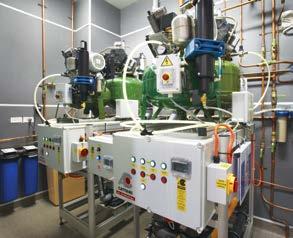
West Coast puts it all together
West Coast Dental Depot has over twenty years experience supplying and installing dental equipment. We have the range, knowledge and experience to ensure you and your surroundings work in perfect harmony. From design through to completion, we will make your surgery transformation an easy and enjoyable experience – all within your budget. Talk to West Coast Dental Depot, we know how to put it all together.

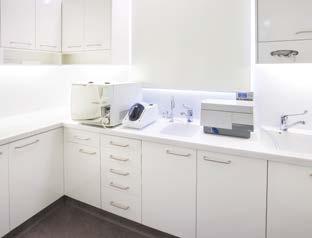
Better equipment. Better support. 17A Wheeler Street, Belmont WA 6104 • Phone (08) 9479 3244 • Fax (08) 9479 3255 • Email greg@westcoastdental.com.au WCDD_18319

With compassion and love
Dr Rachael Wu is helping disadvantaged patients with Tzu Chi International Medical Association (TIMA).
Dr Rachael Wu started volunteering because she wanted to make a positive impact on the community and help people who are disadvantaged. “Sometimes a small helping hand can go a long way,” she says. “People helped my family and me when we needed it. Now I help someone else, and I hope they will continue the chain and help another.”
When Rachael started Dental School, she started volunteering with Tzu Chi International Medical Association (TIMA) – a dental charity that provides free dental care to a range of disadvantaged patients (including refugees, people experiencing homelessness and asylum seekers), with the focus of spreading compassion and love.
“We provide a range of dental procedures, including oral hygiene education, scale and clean, direct restorations, extractions, root canals and dentures,” Rachael says. “TIMA aims to give patients back their confidence and smile, so they feel empowered to gradually improve their lives and perhaps also help someone else in need. We also want to teach good oral hygiene habits, so they know how to take care of their teeth in the long-term.
“We received the 2022 Mars Wrigley Foundation and Australian Dental Health Foundation Healthier Smiles Community Grant and TIMA is grateful that we received the grant to help fund TIMA dental equipment and our oral hygiene education program.”
Since Dental School, Rachael’s role with the charity has transitioned –from waiting room helper, to dental assistant, to lead dental assistant, to clinic coordinator to dentist.
She says the experience of volunteering with TIMA has been both an enlightening and fulfilling experience. “I enjoy being a part of a team that works together to help people build their confidence again,” Rachael explains. “The best aspect is seeing the smiles on patients’ faces when they finish their treatment and hearing about the positive impact the treatment has had on their life.”
In addition to her time with TIMA, Rachael has volunteered at Dental Rescue Days through Dr Tracey Gold. “(Tracey) was my tutor during my time at Dental School and the event that she ran had similar principles to mine, so I thought it would be great if I could help,” Rachael says. “I found the
20 EDITION 2 ∙ 2024 western articulator


experience fun, as it was nice seeing all the dental assistants, tutors and colleagues from my Dental School days.”
For Rachael, there have been many standout moments during her time volunteering. “We had a patient who had dental anxiety and did not go to see the dentist due to fear and financial reasons,” Rachael recalls. “We did not have access to GA and she required extractions. So, with the help of a couple non-clinical volunteers, we encouraged her, talked to her and eased her through the extractions. The patient was able to complete her treatment and the edentulous areas were restored with dentures.
“The most rewarding part is when patients return and tell you about
the positive impact that we, the dental charity, has had on their lives,” she adds. “TIMA aims to empower people with the dental treatment we provide. So, it’s really lovely to hear patients gain their confidence back and are able to secure a job or start studying, and gradually improve their lives.”
To other dentists thinking about volunteering, Rachael says to have fun. “In order to have fun, it should come from the heart or a positive reason,” she explains. “I have seen some people volunteer for superficial reasons like competing with another volunteer, which defeats the spirit of volunteering.”
If you are interested in volunteering with TIMA, contact tima.perth@tzuchi.org.au
22 EDITION 2 ∙ 2024 western articulator
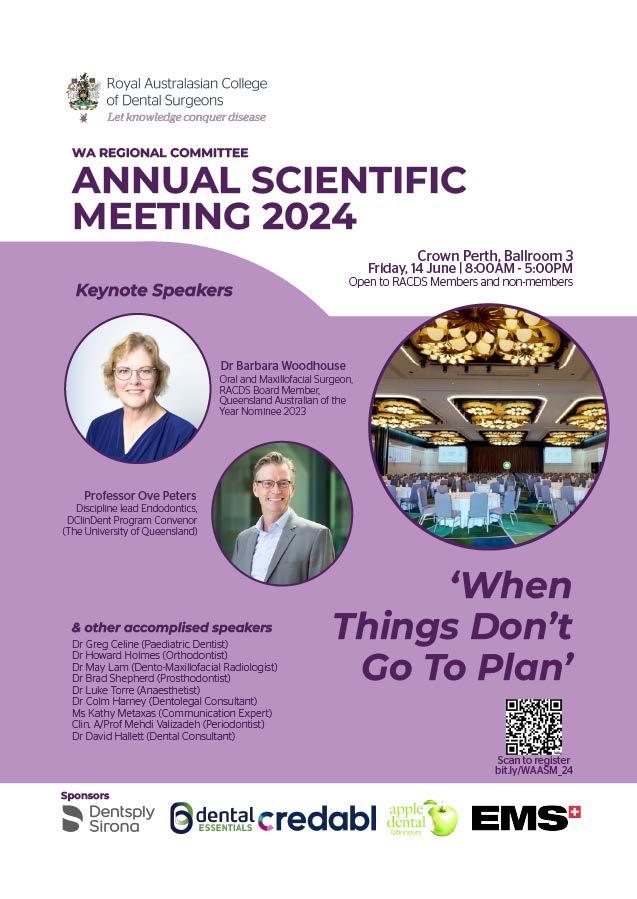
adawa.com.au
Meet Professor Ian Meyers
In the lead-up to his Practical Minimally Invasive Restorative Techniques course in May, we caught up with Ian Meyers.
It is clear Professor Ian Meyers was destined for a career in dentistry. “I had a number of family members who were dentists (my father, my grandfather and my uncle) and in addition to this I was very interested in both the medical and technical aspects of dentistry,” he recalls. “It was also the range of work opportunities after graduation that appealed to me.”
When asked what he most enjoys about his work, Ian says it is embracing the range of ever improving materials and technologies available in dentistry, and utilising these to enhance the ongoing oral health of his patients.
“In addition, having practiced for many years, being able to review patients over a long period of time so I can reflect on and improve my approaches to patient management, particularly in restorative dentistry,” he adds.
An honorary professor at The University of Queensland School of Dentistry, Ian is an experienced presenter and says the best aspect of presenting to his colleagues is sharing experiences, and understanding that most face very similar challenges with their patients. “I greatly enjoy the interaction with colleagues and sharing my experiences, including the successes and the less successful outcomes, and I regularly learn and appreciate more about dentistry when sharing these experiences and challenges,” he says. “I also really enjoy seeing clinicians understand and appreciate different ways to manage patients and
embracing the range of options to make their daily dentistry more enjoyable. “I enjoy working with the dental profession as a whole, particularly interactions with the dental industry and learning about materials and equipment development,” he adds. “I enjoy being involved with the profession of dentistry and what happens outside the clinical environment. I have been very fortunate in my career to have had many opportunities and have embraced many of these and been able to integrate academia, administration, regulation and policy, clinical dentistry, and professional and community service.”
Ian will be presenting Practically Minimally Invasive Restorative Techniques in May at ADA House. The comprehensive, evidence-based, hands-on workshop offers clear, easily understood protocols for adopting a minimally invasive approach to restorative treatments. It has been designed for dentists to develop and enhance their clinical skills to a minimum intervention, preventive patient-centred approach.
“The workshop reviews a range of clinical scenarios and a range of strategies for managing patients using contemporary and conservative approaches,” Ian explains. “It aims to highlight the need for the clinician to understand the presenting situation, determine the appropriate options for management, and where appropriate
24 EDITION 2 ∙ 2024 western articulator
utilise minimally invasive restorative techniques. The presentation provides both evidence-based scientific information to support the various clinical interventions, and also participants will get the chance to undertake a number of practical exercises to enhance their understanding and knowledge. “Attendees will hopefully gain a greater knowledge of the options for restorative management of patients, including best approaches to caries and tooth wear management, optimising tooth surface preparation prior to adhesive restoration, and understanding the restorative materials selection and manipulation to enhance outcomes,” he adds. “This will enable the attendees to develop confidence in utilising these restorative approaches in their everyday dental practice.”
Ian says the workshop is suitable for dentists, oral heath therapists and dental hygienists who want to enhance their knowledge and appreciation of contemporary restorative dentistry, and thereby assist their patients in achieving and maintaining their best possible oral and dental health outcomes.
Although Ian has presented in WA many times, this will be the first time he has presented this course, so don’t miss out on the opportunity be part of this interesting workshop. Professor Ian Meyers will be presenting Practical Minimally Invasive Restorative Techniques on May 25 at ADA House. Book your spot at adawa.com.au/ product/practical-minimallyinvasive-restorative-techniques

What three words best describe you?
Enthusiastic, passionate, caring.
If you weren’t in the dentistry field, what would you be doing for a living?
Fishing…but for a living my second choice would probably be Veterinary Science.
What do you enjoy doing in your spare time?
Gardening, Golf, Fishing.
What is your favourite book or musician/band?
One of my Favourite books – Lord of the Rings. One of my Favourite musicians –John Williamson.
If there anything people might be surprised to learn about you?
I enjoy growing, cooking, and preserving my own fruit and vegetables.
What future plans are on the horizon for you?
I plan to continue with both my clinical and academic pursuits and continue to embrace new challenges and opportunities in dentistry. Having recently completed my term as president and board member of the RACDS, I now look forward to taking on the role of President of the ICD in 2025
adawa.com.au
with Professor Ian Meyers
Laser acupuncture for the temporomandibular disorder patient
Complementary medicine is defined as treatment that is used alongside standard medical treatment but is not considered by itself to be a standard treatment. It can be divided into mind-body therapies such as mental focus, breathing, body movements; biologically based practices such as vitamins, dietary supplements; body-based practices such as massage therapy, reflexology; energy healing including reiki and whole medical systems such as the use of acupuncture in Traditional Chinese Medicine. Recent statistics show that more than 70% of Australians use complementary medicine alongside standard medical therapy and the prevalence of use of complementary medicines and natural therapies modalities remains consistently high. We can see these statistics translate clinically, as more and more patients are requesting “alternative” treatment methods. As clinicians, it is important to be aware complementary medical practices relevant to conditions that we treat and be able to educate the patient that may query these complementary medical practices.
The current therapeutic management for temporomandibular disorders (TMD) is based on a multidisciplinary, biopsychosocial model approach. Treatment options range from conservative, non-invasive therapeutic measures to surgical interventions. These include self-management measures, occlusal splints, medications, cognitive behavioural techniques, and various forms of physiotherapeutic management. However, the popularity of complementary therapy for TMD is increasing day by day.
Acupuncture is an increasingly used complementary treatment modality for therapeutic management of pain symptoms. More recently, laser acupuncture therapy (LAT) has been proposed as an alternative to conventional acupuncture therapy to eliminate the need for needle insertion. It involves the
Dr Lalima Tiwari Oral Medicine Specialist Perth Oral Medicine and Dental Sleep Centre
use of low-intensity laser light for stimulating the traditional acupuncture points. Until now, studies evaluating these complementary therapies have not been conclusive. Further, evidence regarding laser acupuncture in TMD management is scarce. A recent systematic review and meta-analysis including randomized clinical trials (RCT) of acupuncture and laser acupuncture assessed its efficacy in the treatment for temporomandibular disorders compared to other treatments. A total of 11 RCTs were included in the study. Findings from the study showed that traditional acupuncture was helpful in reducing the severity of TMD pain with muscle origin in the short-term. Some studies also noted that individuals with TMDs of muscular origin demonstrated improvements in their interincisal opening and overall masticatory function. Interestingly, LAT was superior to traditional acupuncture. Further one study showed that after three months of treatment, laser acupuncture was responsible for getting rid of all myofascial pain symptoms compared to placebo, suggesting that LAT is a safe, non-invasive and efficient therapeutic choice with no negative side effects. As always, one must be cautious when interpreting such literature and using the evidence in clinical practice. For example, the studies included in this review had varying methods for diagnosing TMD and for evaluating the effectiveness of acupuncture and laser acupuncture. As such, it is difficult to draw exhaustive conclusions. However, given the increasing use of complementary medicine, being aware of current literature in this area is of essential importance in the overall management of your TMD patient.
For further reading: Di Francesco, F., Minervini, G., Siurkel, Y. et al. Efficacy of acupuncture and laser acupuncture in temporomandibular disorders: a systematic review and metaanalysis of randomized controlled trials. BMC Oral Health 24, 174 (2024). https://doi.org/10.1186/s12903-023-03806-1
26 EDITION 2 ∙ 2024 western articulator

PERIODONTAL DEGUSTATION AT AMELIA PARK
3 CPD Saturday 4 May 12.15pm - 3.00pm
COURSE OUTLINE
Join Dr Wendy Gill for a long lunch to talk about all things gums.
TOPICS COVERED
• Keys to communicating periodontitis to patients
• What’s new in preventing and dealing with recession
• Is there a role for the use of laser in periodontology?
Amelia Park Restaurant is a family-owned and run restaurant where down to earth service, a sophisticated setting and honest food meet – all for exceptional value. To dine here is to experience Margaret River the way one should: through locally-sourced produce, expressive wine and quintessential vineyard views.
Course includes: A bespoke 3 course menu with wine.
ABOUT THE PRESENTER
Dr Wendy Gill graduated from UWA in 1994 and spent 9 years in general practice before completing her Masters Degree in Periodontology in 2006. Wendy obtained her Fellowship of the Royal Australasian College of Dental Surgeons (Perio) in the same year and started Alliance Periodontics and Implant Dentistry in 2008. In 2014 Wendy underwent extensive additional training in the use of dental lasers for treatment of periodontal and peri implant diseases. She is actively involved with the International Team for Implantology and runs a study club for dentists and dental specialists in Perth. She also lectures locally, nationally and internationally on periodontal and dental implant topics.
AMELIA PARK $400
members
SCAN QR TO BOOK FOR MORE INFORMATION GO TO ADAWA.COM.AU/CPD
Event Types WA Dental CPD Events ADAWA Meetings International Dinner Courses SCAN QR TO BOOK APRIL 19 FRI Restore My First Implant - April Drs Graham Carmichael and Glen Liddelow THE BRANEMARK CENTER 20 SAT Orofacial Pain and TMD Hands-On Dr Davis Thomas ADA House 22 MON Are You Sure? Risk Assessment for Extractions Drs Carolyn Stulner and Magdalen Foo ADA House MAY 1 WED NPP Second Study Club 2024 Dr Joshua Graieg ADA House 2 THUR Business Series 2 Yves Schoof, Mitchell Walmsley, David McClelland ADA House 4 SAT Periodontal Degustation at Amelia Park Dr Wendy Gill Amelia Park Private Dining Room 11 SAT Management of Medical Emergencies in the Dental Practice Cynergex Group ADA House 15 WED Digital Implant Planning Dr Graham Carmichael THE BRANEMARK CENTER 18 SAT Endodontic Series 2 Dr Gaurav Vasudeva UWA Dental School 25 SAT Practical Minimally Invasive Restorative Techniques Professor Ian Meyers ADA House JUNE 6 THUR Business Series 3 Jenny Edinger, Sean Foy, Victoria Stamper ADA House 8 SAT Overseas qualified dentists (ADC) Drs Victor Matsubara, Amit Gurbuxani OHCWA 8 SAT Practical Oral Surgery - June Drs Carolyn Stulner, Mario Alberghini, Sophie Mougos, Magdalen Foo, Lee Kaing, Frank Chang CTEC 15 SAT Preserving the Tooth Drs Asheen Behari and Paul Gorgolis UWA DENTAL SCHOOL 21 / 22 fri/SAT Nitrous Oxide and Oral Sedation Dr Steven Parker UWA DENTAL SCHOOL 28 FRI Hands On XLA Associate Professor Dieter Gebauer and Professor Ray Williamson CTEC JULY 5 WED Forensic Odontology Dr Jenny Ball MANTRA Bunbury Lighthouse 13 SAT Endodontic Series 3 Dr Mostafa Elkholy UWA Dental School 20 SAT Don’t Dis My Ability! Dr Jee-Yun Leung and Dr Lydia See ADA House 25 THUR What’s in the Shop Drs E Elhassan, A Jacobs and R Jennings ADA House 27 SAT Basic Posterior Composites Drs El-Hakim, Alex Park and Jenny Ball UWA Dental School 30 TUES Business Series 4 Enore Panetta, Drs Martin Webb, Amit Gurbaxani, Brian Koch and Alex Park ADA House AUGUST 9 FRI Restore My First Implant - August Drs Graham Carmichael and Glen Liddelow THE BRANEMARK CENTRE 10 SAT Practical Oral Surgery - August Drs Carolyn Stulner, Mario Alberghini, Sophie Mougos, Magdalen Foo, Lee Kaing, Frank Chang UWA Dental School
CALENDAR 2024
15 THUR Paediatric Soft Tissues Dr Greg Celine UNIVERSITY CLUB 16 FRI Endodontic Complications & Consent Dr Mark Johnstone ADA House 30 FRI Lets get moving! Drs G Cheung, L Leask and Mr D Owen ADA House september 7 SAT Ridge Preservation in Daily Dental Practice Drs Leticia Algarves Miranda and Mahnaz Syed ADA House 7 SAT Hands-On Caries Detection and Management for Dental Professionals Dr Jilen Patel UWA Dental School 14 SAT Endodontic Series 4 Dr Mostafa Elkholy UWA Dental School 20 FRI Managing Neck and Back Pain Professor Peter O’Sullivan ADA House 21 SAT Business Series 5 Michelle Pritchard ADA House 27 FRI Advanced Single Implant Restorations & Introduction to Short-Span Bridges Drs Graham Carmichael and Glen Liddelow THE BRANEMARK CENTER october 5 SAT All Stitched Up Dr Lee Kaing ADA House 12 SAT Anterior Composites - Doable, Predictable and Repeatable Dr Vishal Gupta UWA Dental School 13 SUN Posterior Composites - Doable, Predicatable and Repeatable Dr Vishal Gupta UWA Dental School 16 WED Business Series 6 J Ryan, K Creasy, G Bishop, A Maurice, B Potter ADA House 19 SAT Paediatric Dentistry in General Dental Practice Dr Udit Bhatnagar UWA DENTAL SCHOOL 24 THUR The Bite Stuff Dr Asheen Behari UNIVERSITY CLUB 26 SAT Practical Oral Surgery - October Drs Carolyn Stulner, Mario Alberghini, Sophie Mougos, Magdalen Foo, Lee Kaing, Frank Chang CTEC November 1 FRI Beautiful Periodontics In Beautiful Albany Dr Ahmed Saleh Hilton Garden Inn Albany 5 TUES Surgical Aseptic Technique in the Dental Practice Office Dr Roslyn Franklin and Ms Yvonne Fletcher TBC 8/9 FRI/SAT Porcelain Veneers and Ceramic Onlays Drs Asheen Behari and Paul Gorgolis UWA DENTAL SCHOOL 13 WED CPR Refresher Hands-On Course Surf Life Saving WA ADA House 14 THUR Digital Smile Design Dinner Dr Sally McMullen UNIVERSITY CLUB 23 SAT Endodontic Series 5 Dr Sharzad Nazari, Stephen Kwang, Jane McCarthy, Colm Harney, Gaurav Vasudeva ADA House 30 SAT Direct Veneers Dr Joshua Graieg and Clin A Prof Glen Liddelow UWA Dental School PUBLIC HOLIDAYS 25 April – ANZAC Day 3 June – WA Day 23 Sept – King’s Birthday 25 Dec – Christmas Day 26 Dec – Boxing Day PUBLIC SCHOOL HOLIDAYS 29 June – 14 July 21 Sept – 6 Oct 13 Dec – 4 Feb

PRESERVING THE TOOTH
COURSE OUTLINE
Explore the nuances of ceramic onlays and inlays in this one-day course. Learn when to choose each restoration, select materials, master preparation techniques, and ensure successful temporisation and bonding of restorations.
LEARNING OUTCOMES
• Be able to make informed choices for clinical cases
• Differentiate the advantages between onlays and inlays and their respective prescription
• Learn tooth preparation techniques
• Select appropriate materials
• Understand bonding methods
• Communication with patients as to benefits of onlays and inlays
ABOUT THE PRESENTERS
Dr Asheen Behari is a general practitioner in private practice in Claremont, Perth. He graduated from the University of the Witwatersrand in 1993, subsequently completing a Post Graduate Diploma in Clinical Dentistry in Oral Implants at the University of Sydney. Dr Behari is a Clinical Associate lecturer in the Discipline of Oral Rehabilitation at the University of Sydney.
Dr Paul Gorgolis is a general practitioner currently in private in Wembley Downs. In London, he developed the UK’s first multidisciplinary general and specialist practice where patients could be comprehensively managed and treated “under one roof”.

CPD Saturday 15 June 8.30am - 5.00pm UWA DENTAL SCHOOL $1287 members HAND S -ON
7
SCAN QR TO BOOK FOR MORE INFORMATION GO TO ADAWA.COM.AU/CPD SPONSORED BY
Directory
Premium Partners

AMA Finance Brokers
ADA members are eligible to receive up to $2,000^ cashback on top of the cashback offer from the bank or lender (if eligible) on home loans successfully settled between 1 January 2024 and 31 December 2024.
Phone 1800 262 346 or email info@amafinance.com.au
Plus Partner


Panetta McGrath Lawyers
We are excited to offer a member benefits program exclusive to ADAWA members. As a member of ADAWA, the member benefits program entitles you to an initial 30-minute consultation in person, by phone, or via video conference. ADAWA members are also eligible for a 15% discount on our standard hourly rates - ADAWA referral required pmlawyers.com.au
Credabl has built a strong reputation offering tailored financial solutions. Whether you are looking to expand your practice, invest in medical equipment or explore personal finance options, Credabl's has you covered. Their suite of financial products includes medical equipment finance, practice loans, residential and commercial property loans, car finance and personal loans. credabl.com.au
Sponsors and Advertisers



HIF Corporate Program
ADAWA members are entitled to a 12% discount on health cover each year when premiums are paid by direct debit. Existing HIF members need only call or email to have the discount applied to their membership.
Visit hif.com.au/adawa and use the access code ADAWA
Alternatively call HIF on 1300 13 40 60 or email sales@hif.com.au
adawa.com.au


How Upcoming Tax Changes Could Take Years Off Your Home Loan
In the 2018/2019 tax year, the Government legislated three stages of tax cuts. While you may already know this, what you might not be aware of is that in July 2024, stage three of these tax cuts, designed to allow Australians to pay less tax by simplifying the tax brackets, will come into effect. The savings that will come from these tax cuts will vary dependent on your personal circumstances, however you could potentially save thousands per year.
Whilst planning a long tropical holiday with these extra funds might be tempting, using the extra money from your tax savings and paying it into your home loan could save thousands of dollars in interest and shed years off your mortgage. Let us explain how.
Updates to tax brackets and potential savings
Below is a table, detailing the previous tax brackets and the new revised tax brackets coming into effect from July 2024. (Source: ATO 2024)
While these changes to tax brackets will surely benefit people across the economy, what exactly do they mean for you? The table (Source: ATO 2024) illustrates the dollar value of these tax changes; the amount of money going back into your pocket will depend on your income. To illustrate this point, various income increments and their respective savings are provided – every situation is different and the below assumes no other tax deductions are being made, so if you are curious to find out what your own personal savings would be, reach out to your accountant for more information.
How these changes could potentially mean big savings on your loan
Now that you have an idea of the possible savings from the updated tax brackets, how do these tax savings potentially translate to hundreds of thousands of dollars saved over the life of your home loan and years shaved off your mortgage? Below is a case study, based on a family mortgage owing $1,000,000, with both spouses earning a gross income of $100,000 each. For this case study, we are assuming a home loan with a 30-year term and an interest rate of 6.25%*.
Based on a $1,000,000 mortgage, with a rate of 6.25% over a standard 30-year loan term, the estimated minimum monthly repayment
would be $6,158. With both spouses earning a gross income of $100,000 each, this could equate to tax savings of $4,358 per year for the household**, or a monthly cashflow boost of approximately $363 per month. If this $363 each month were paid directly into the home loan, you might be shocked to know that this could shave 51 months (over four years) off your 30-year loan term and save a significant $204,015^ in interest charges over the life of the loan.
It’s hard to believe that such a small increase to monthly repayments can potentially make such a monumental difference to the overall interest paid on your loan. We don’t blame you if you’re already dreaming about what to do with that extra $200,000.
Current tax year Revised from 1st July 2024 Taxable Income Tax rate Taxable Income Tax Rate 0 - $18,200 0% 0 - $18,200 0% $18,201 - $45,000 19% $18,201 - $45,000 16% $45,001 - $120,000 32.5% $45,001 - $135,000 30% $120,001 - $180,000 37% $135,001 - $190,000 37% >$180,000 45% >$190,000 45%
Taxable Income Tax Savings Per Annum $50,000 $929 $80,000 $1,679 $100,000 $2,179 $140,000 $3,729 $200,000 $4,529
adawa.com.au

Important to note
If your home loan is currently on a fixed interest rate, or if you are thinking about fixing your loan in future, your bank may have thresholds as to how much extra you can repay into your loan before you incur any break costs. If you do want to make extra repayments into your fixed loan, you will need to check with your bank or broker as to how much extra you can pay off without penalty.
At Credabl, we have access to a large suite of home loan options catered to the medical industry. We work with many medical professionals to find the solution best suited to their individual needs and situation and can work with you to do the same. To understand which of our solutions may be best for you, you can always reach out to us for a friendly chat.
If you are interested in finding more about how our offerings can work for you, or if you would just like to have your loan reviewed, contact Alison Gardner on +61 428 563 325, or any of the team at Credabl on 1300 27 33 22 for a chat.
*This is the borrower rate, not considering any monthly or annual fees attached to the loan.
**These calculations are based on a mortgage constant rate of 6.25% over 30 years. Any increase or decrease to this rate over the life of the loan will impact the figures presented.
^Conditions apply
Disclaimer
This article is a guide only and does not constitute any recommendation on behalf of Credabl Pty Ltd (ACN 615 968 100) or any of its related bodies corporate (Credabl). The information in this article is general in nature and we have not taken into account your personal objectives or financial circumstances or needs when preparing it. Before acting on this information you should consider if it is suitable for your personal circumstances. Credabl is not offering financial, tax or legal advice. You should obtain independent financial, tax and legal advice as appropriate.

34 EDITION 2 ∙ 2024 western articulator

Perio Pockets short pockets of information
Dr Wendy Gill, Specialist Periodontist
The Australian and New Zealand Academy of Periodontists is committed to providing and supporting education for Oral Health Professionals in the sphere of all aspects of Periodontal Diseases and Conditions.
The latest White Paper from The Economist states that oral diseases have surpassed all other non-communicable diseases (NCDs) in terms of their global prevalence. The most common oral diseases are caries and severe periodontitis, affecting about 2bn and 1bn people, respectively.
There has been a monumental shift in our understanding of periodontal disease (and caries)– they are no longer viewed as communicable diseases that are caused by microbes.
Gingivitis drives the emergence of disease-forming microbes, which, in susceptible people, then leads to
periodontitis. Individual susceptibility is governed by several risk factors, some of which are shared with other NCDs.
Therefore, Periodontitis and Caries are now classified as NCDs that are largely preventable. In 2021, the World Health Organization (WHO) adopted a resolution on oral health, which recommended pivoting to a preventive approach for oral diseases and integrating oral care with NCDs care into the universal health care (UHC) agenda.
Over the coming months, ANZAP members are committed to providing helpful information to ADAWA members in this corner. As the WA representative, I am very proud of the passion of our members to provide knowledge and education to our peers.
To find our members, please search www.perioinfo.org
adawa.com.au
Photo courtesy: Economist Impact
Checking for zero
By Dr Colm Harney, Dentolegal Consultant at Dental Protection
Multiplication is the process of combining two or more quantities to find their total value or product. However, there's one number that holds a unique significance in mathematics: zero.
Zero possesses distinct properties that set it apart from other numbers. One of its most notable characteristics is its behaviour when multiplied by other numbers. Regardless of the value of the other number involved, from one to Elon Musk net worth numbers, that number multiplied by zero results in zero. This fundamental property is formally known as the zero property of multiplication.
We know that in life there are some actions that can negate everything else of meaning that we do, regardless of prior efforts, sunk costs or significance. Gerald Ratner was the CEO of the Ratners Group, jewellers that shook up the UK jewellery market in the 1980s by aiming some of its products at the budget end of the market through a chain of high street shops. Although the chain was widely ridiculed and considered tacky and cheap by other jewellers, many customers wanting to buy jewellery and not break the bank flocked to the stores, turning Ratners into a household name throughout England and capturing over 50% of the UK’s jewellery market.
At the peak of his powers in April 1991, Ratner was invited to speak to the Institute of Directors, about how he’d made his company so successful. The speaking engagement, which Ratner himself now refers to as “the speech”, has since gone down as one of the biggest blunders in business history. When asked how the company was able to sell things so cheaply, he replied (later saying it was in jest) – “People say,
‘How can you sell this for such a low price?’ I say, because it’s total crap.”
After the speech, the value of the Ratner group plummeted by around £500 million, which very nearly resulted in the group's collapse. This blunder became known as ‘doing a Ratner’.
Personal examples of multiplying by zero can be adopting healthy, wholesome living by eating organic, exercising and sleeping optimally – and then being casual about wearing a seatbelt while driving. Some ways of thinking might make it seem like this is a risk one could take on certain occasions. If we consider whether the multiplying by zero model applies (from the risk of demerit points / hefty fines to the risk of catastrophic injury) then maybe it’s a risk we should never take, and indeed most don’t.
What about the practice of Dentistry –where might some of the ‘zeroes’ lie in ambush?
We can have the best hands and do beautiful (by all objective measures) work, but if there is a disconnect between the understanding of the Dentist and the patient in what outcome is to be achieved (mutually understood and agreed consent prior to treatment) – then it may well be a multiple of zero if the patient has not had their expectations met.
Alternatively, we might well have done the beautiful work and discussed all the material risks / gained consent – but when a lawsuit lands in the inbox years later and
36 EDITION 2 ∙ 2024 western articulator
the records are scant or non-existent, then both practitioner and their indemnifier may be left holding ‘zero’, in terms of being able to mount a viable defence of the matter.
What about marketing and image?
An architect designed practice renovation backed up by lavish spend on optimal branding and SEO might lead to many new patients contacting the practice. But if there is a staff member consistently ‘doing a Ratner’, with poor interpersonal skills and rude demeanour on initial patient contact, then all the efforts and dollars may degrade to zero. We all know the customer satisfaction statistics – one happy customer will on average tell one other person, whereas one dissatisfied customer may tell up to nine or ten people.
Cross infection control breaches also have that catastrophic ‘multiplication

by zero’ potential. Consider the practitioner with the fabulous work, happy patients, great consent / records and bustling practice – it can all come unstuck very quickly if the regulator finds cross infection control breaches. It may shut the practice and suspend the practitioner (at least until issues are rectified to their satisfaction) in order to uphold their overarching duty to ensure public safety.
In conclusion, when we take stock and evaluate risk, we need to consider not only likelihood / frequency of occurrence but also consequences if it were to occur. The ‘zero’ model focuses on the consequences – just because the likelihood of something happening is very slim, it does not mean that it shouldn’t be front of mind in risk assessment, especially where the possibility of the ‘multiplication by zero’ effect may be at play.
Handling Uncomfortable Conversations

Conversations regarding salary, commission, pay negotiation, performance appraisals and contractual terms can be uncomfortable for both the employer and the employee. Uncomfortable conversations can be difficult to manage, and it is natural for individuals to try and avoid these discussions. However, they are part of the employment relationship and are crucial for effective communication. Handling uncomfortable conversations in an effective manner ensures that positive working relationships are preserved. This article discusses how these types of conversations can be best managed from both employer and employee perspectives.
Handling the conversation as the employer:
Collating information and preparing for the conversation:
It is crucial that you have all the information required before conducting an uncomfortable conversation. This ensures you are informed and prepared to answer any follow up questions the employee may have throughout. This also ensures
you can prepare for potential reactions and plan how you will respond. It is also important to consider if you are the most appropriate representative to conduct the conversation. Perhaps the circumstances are personal to you, or you may have a biased opinion towards, in this case it may be best to appoint an appropriate non-biased company representative to conduct the conversation.
Choosing the right time:
In order to ensure the conversation is effective ensure you arrange to meet the employee at a time and in a location that is private, quiet, where you won’t be rushed or interrupted. Conducting a difficult conversation in a public space or in an environment where other employees may hear the conversation can make it harder for an employee to feel comfortable to be open and honest which prevents effective communication. If possible, invite the employee to the meeting with as much notice as possible, allowing them time to prepare for the conversation.
38 EDITION 2 ∙ 2024 western articulator
During the conversation:
As an employer and the instigator of the meeting you have the opportunity to set the tone of the conversation. By being supportive, respectful, and expressing willingness to listen to the employee, you can expect the employee to remain calm and reasonable. By actively listening to the employee’s viewpoint and perspective you validate the employee’s feelings even if their viewpoint is not one you agree with. You should always ensure you are being specific regarding the circumstances being discussed. If applicable ensure you can provide specific examples, dates, etc, so the employee can easily identify the issue and respond appropriately.
The most prominent objective with uncomfortable conversations is to rectify the situation at hand. This minimises the chance you will need to engage in an uncomfortable conversation again. Therefore, focus on solutions. Explore strategies or plans with mutually beneficial steps or outcomes. However, ensure that you set clear expectations for the employment relationship beyond the conversation. Perhaps if you were discussing performance management and the employee’s performance doesn’t improve post conversation it may result in disciplinary action up to and including termination.
Post conversation:
It is key that as an employer, you document the conversation with the employee and in most circumstances, you should provide the employee with a copy of the document for their own records. Written summary of any discussions conducted also serves as written confirmation of what is expected of the employee moving forward. Having written documentation allows for easy referral in situations where improvement doesn’t occur.
Ensure that in the applicable circumstances you touch base with the employee with regard to the conversation and the post conversation outcomes. By providing ongoing support and guidance, you will show the employee that they are valued, and the company wants them to succeed.
Responding to the conversation as an employee:
As an employee engaged in an uncomfortable conversation with your employer, you have entitlement to be respected and heard. Your employer is also entitled to being respected and heard so it is important you remain calm and composed throughout this process. It is important you ensure that you clearly and professionally communicate your viewpoints to your employer during the conversation and always ensure you ask questions and seek clarification if you don’t understand something that your employer is trying to discuss. This will demonstrate you are actively listening and engaged in the conversation.
After the conversation has concluded, take time to reflect and ensure you understood all aspects discussed. If you have any follow up questions, seek clarification with your employer. As an employee, it is your responsibility to implement and act upon the feedback that is provided by your employer with their guidance, training and support. If you don’t clearly understand what was discussed this may prevent you from effectively implementing the feedback. If you fail to implement the feedback, you may risk more serious action taking place, such as disciplinary action (including termination).
For more information on this article please call the ADA HR Advisory Service on 1300 232 462.
adawa.com.au
good news stories

General Meeting
Congratulations to the following members who received badges of continuous membership at the General Meeting in March:
Rethink Sugary Drink
Members of the Rethink Sugary Drink alliance (including the Australian Medical Association, Cancer Council Australia, the Australian Dental Association, Food for Health Alliance and the Heart Foundation) launched a new position statement in February urging the government to introduce the 20 per cent health levy on sugary drink manufacturers. For details go to; www.rethinksugarydrink.org.au/media/callfor-health-levy-on-sugary-drinks.html
40-year: Vrej Boyadjian, Santo Cardaci, Dominic Faraone, Colin O’Brien, Greg Chiswell ( who was an apology) and Stuart Phillips.
50-year: Kenneth Watts
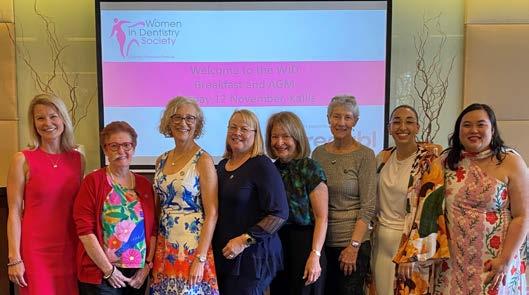
Women in Dentistry
At the Women in Dentistry Society WA Breakfast and AGM late last year, some trailblazers in the WA Dental industry were awarded life membership to the society. These included Dr Meredith Arcus, Dr Jenny Ball, Dr Shelley Greenway, Dr Bernadette Pilkington and Dr Vicki Lynch. Congratulations!
WADA Golf News
Royal Fremantle Golf Club
Opening Fixture 2 February 2024
Our first fixture of the year was again held at Royal Fremantle Golf Club with Med and Dent WA being our Major Sponsor for the day. We welcome WA based Dental company ‘Med and Dent WA’ as our new Major sponsor for the 2024 golfing year.
Twenty-two golfers (the heat kept a few away on the day) took to the course for our traditional opening game at the superb Royal Fremantle course, this year under very hot conditions 38 degrees as the group teed off. Stu Phillips managed the conditions well, finishing 1st (for the second year in a row – I think he likes this course) with a terrific score of 42 stableford points. Captain Frank Welten came in 2nd on 39 points holding off David Owen (38pts) in third place. Congratulations to those players.
WADA Golf acknowledges our corporate sponsors who have joined us again for the new year, including: Med and Dent WA, Dentsply Sirona; Dentaurum Australia, Health Practice Brokers, Insight Dental Ceramics, Swan Valley Dental Laboratory and Healthlinc. The ongoing support of these corporate partners is greatly appreciated and the opportunity for both camaraderie and networking
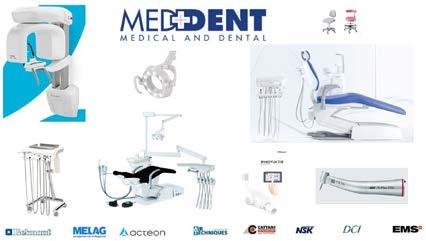
is welcomed by all. Our sponsored novelty events were not equally shared amongst the group, some players like to win all the prizes!
Congratulations to Stu and David who really had a day out!!
Summary of Results
1st – Stu Phillips
42 stableford points
2nd – Frank Welten
39 stableford points
3rd – David Owen
38 stableford points
Nearest the pin
3rd hole Graeme Washbourne Health Practice Brokers
6th hole Stu Phillips
Med and Dent WA
8th hole
12th hole
David Owen
Swan Valley Dental Laboratory
Simon Tee Dentsply Sirona
17th hole Stu Phillips Healthlinc
Longest drive (11th Hole)
David Owen
Insight Dental Ceramics
All interested golfers are welcome to play. Please direct your interest to the email address below for a copy of our fixtures, or for any other information relating to a game with the WADA Golf group.
Good golfing
Frank Welten
WADA Golf Captain Dentistgolf@gmail.com
Professional Notices

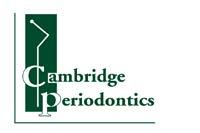
Dr Elizabeth Lam – new addition to the team Bob Childs, Michael O'Halloran, Gareth Davies and Adrian Best are delighted to welcome Specialist Periodontist Dr Liz Lam to our Specialist Team at Cambridge Periodontics and Specialist Oral Surgery Perth. Liz looks forward to accepting referrals for all aspects of periodontics and implant surgery.
T (08) 9388 3453
F (08) 9388 3442
E cambridgeperio@bigpond.com
A 174 Cambridge St, West Leederville, WA 6007

Oral and Maxillofacial Radiologist
Dr Biun, Oral and Maxillofacial Radiologist, has joined Clinical Professor Bernard Koong and Doctors Tom Huang, Dayea Oh and May Lam at Envision Medical Imaging. John is looking forward to assisting you with your radiological needs.
Wembley
T (08) 6382 3888
E bookings@envisionmi.com.au

A 178-190 Cambridge Street Wembley WA 6014
Booragoon
T (08) 6382 3888
E bookings@envisionmi.com.au
A 175 Davy Street Booragoon WA 6168 W envisionmi.com.au
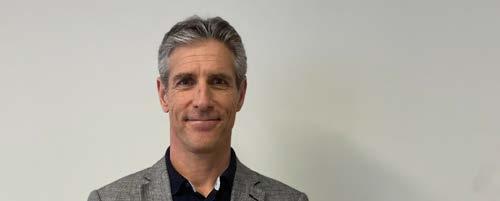
New Practice Announcement
Dr Samuel Bennett is delighted to announce the commencement of his contemporary boutique specialist orthodontic practice located in Nedlands. Sam and Team are committed to providing excellence and value of customised orthodontic treatment and care, in a relaxed and personable style. Referrals for children, teenagers, and adults are welcome for any orthodontic case, ranging from those requiring simple interceptive treatments to complex interdisciplinary care. Sam’s practice is situated at the corner of Stirling Highway and Loftus Street, with parking on premises.
T (08) 6507 4049
E bennettsamuelc@outlook.com
A Unit 1, 189 Stirling Hwy Nedlands WA 6009
W orthodontist-sb.com

New Practice Announcement
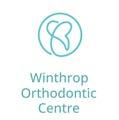
Dr Gordon Cheung is excited to share the launch of his boutique specialised orthodontic practice located in Winthrop. Together with his team, Gordon is dedicated to delivering top-tier contemporary orthodontic care within a warm and inviting atmosphere. Dr Gordon personally treats each patient's treatment during every visit, ensuring the utmost quality in results. Referrals for patients of all ages are welcome, and Dr Gordon is available to consult in English, Mandarin or Cantonese.
T (08) 9310 4911
E admin@winthroportho.com.au
A 8/52 Hatherly Parade, Winthrop 6150
W winthroportho.com.au
42 EDITION 2 ∙ 2024 western articulator

Dr Maleeha Gilani - new addition to the team
We are delighted to announce Specialist Paediatric Dentist Dr Maleeha Gilani has joined Dr Timothy Johnston and the team at iKids. Dr Gilani brings years of extensive dental experience and is now accepting referrals for all aspects of paediatric dental care.
T (08) 9433 6082
E ikids@ikidsdentalcare.com.au
A 94 Stirling Highway North Fremantle WA 6159
W ikidsdentalcare.com.au
AT THE General Meeting
Wednesday 8 May
Join us at the ADAWA General Meeting, with a lecture by Dr Sonny Lee.
ADA House
54-58 Havelock St West Perth
6.15pm Eat and Meet
7.15pm Meeting Followed by Lecture
RSVP to adawa.com.au/membership/rsvp













Take advantage of more than 200 sessions, 200+ CPD hours and the expertise of 160 speakers. Available to the end of the current CPD cycle.
Register now via ada.org.au/on-demand












































































